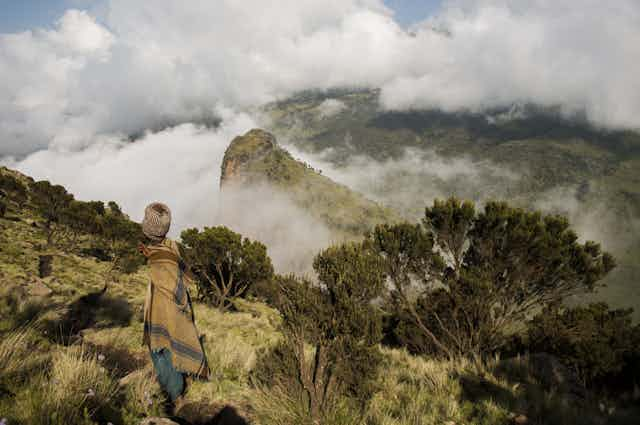Would we knock down the pyramids or flatten the Acropolis to make way for housing estates, roads or farms? You would hope not. Such an indictment would deprive future generations of the joy and marvel we all experience when visiting or learning about such historic places.
Yet right now, across our planet, many of the United Nations’ World Heritage sites that have been designated for natural reasons are being rapidly destroyed in the pursuit of short-term economic goals.
In our paper published in Biological Conservation, we found that expanding human activity has damaged more than 50 of the 203 natural sites, and 120 have lost parts of their forests over the past 20 years. Up to 20 sites risk being damaged beyond repair.
So how can we better look after these precious sites?
Jewels in the crown
Globally recognised areas that contain the Earth’s most beautiful and important natural places are granted natural World Heritage status by UNESCO (the United Nations Educational, Scientific and Cultural Organisation). Each natural World Heritage site is unique and therefore irreplaceable.
Current sites include iconic landscapes such as Yosemite National Park in the United States, and important biodiversity conservation areas such as Serengeti National Park in Tanzania.

The World Heritage Convention strives to protect natural World Heritage sites and keep their condition as close to pristine as possible. As with those hundreds of cultural World Heritage sites such as Petra and Masada, no human modification or damage is acceptable. These sites are the natural world’s crown jewels.
We examined the degree of human pressure (including roads, agriculture, urbanisation and industrial infrastructure) and direct forest loss across areas with natural World Heritage status.
These changes are not compatible with maintaining the natural heritage of these places. And should sites be damaged beyond repair, we will have lost some of the common heritage of humankind forever.

Which sites fared worst?
We found that human pressure within sites has increased in every continent except Europe over the last two decades. Asia is home to the worst-affected sites, including Manas Wildlife Sanctuary in India, Komodo National Park in Indonesia, and Chitwan National Park in Nepal. Development has also badly affected Simien National Park in Ethiopia and it has been listed as World Heritage “in danger”. European sites, such as St Kilda, were already highly modified 20 years ago and have largely remained as such since then.

A majority of the sites have lost areas of forest. Wood Buffalo National Park in Canada lost 2,581 square kilometres (11.7%) and Río Plátano Biosphere Reserve in Honduras lost 365 square km (8.5%) of forest since 2000.
The processes behind why the sites lost forest cover are diverse. In the Río Plátano Biosphere Reserve, also “in danger”, illegal drug trafficking created insecurity and instability in the region, which allowed widespread illegal deforestation and illegal settlement to occur.

In North America, even celebrated places like Yellowstone have been affected, losing some 6% of forest cover. This, and the losses in Wood Buffalo National Park, is almost certainly due to the largest pine beetle outbreaks on record. These are stripping trees of foliage and making them more susceptible to fire.
Although pine beetle damage is a semi-natural phenomenon, it is being assisted by human-caused climate change, as winters are no longer cold enough to kill off the beetles. This is notoriously hard to manage on the ground, but instead requires the United States and Canada to strengthen their efforts to fight climate change nationally and on the global stage.
Time to stop paving paradise
The 192 signatories to the World Heritage Convention need to respond to these findings. The World Heritage Committee must use information like this to immediately assess these highly threatened sites and work with nations to try to halt the erosion.
The UNESCO World Heritage Committee meets again this July in Poland. It is not too late; with urgent intervention most sites can still be retained.

The method we have used makes it much easier to identify natural World Heritage sites that may need to be added to the “in danger” list so extra attention and resources are channelled towards saving them.
Sites such as Río Plátano Biosphere Reserve, which have lost so much forest in such a short time, need to be identified and those nations supported in averting further decline. Ultimately, World Heritage status can be retracted if the values a site is listed for are undermined. This would be an international embarrassment for the host nation.
The global community can play a role by holding governments to account so that they take the conservation of natural World Heritage sites seriously. We already do this for many of our cultural sites, and it is time to give natural sites the equal recognition and support they deserve.
Just as we would defend the Colosseum in Rome, Petra in Jordan, or Mont St Michel in France, we must fight against the planned highway across the Serengeti in Tanzania, uranium mining in Kakadu and logging of the Styx Valley in Australia, and forests being cleared for agriculture in Sumatra, Indonesia. This work is a call to action to save our natural world heritage.

